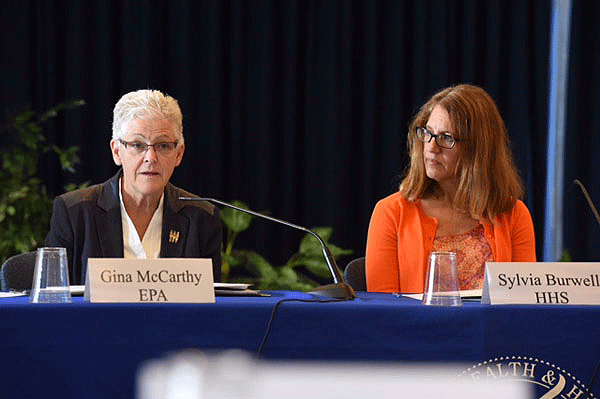Reflections on Children’s Health Month: Looking Back to Move Ahead
By Ruth Etzel, MD
In October we celebrated Children’s Health Month. As I reflect on the month, I think of the many exciting events and activities that highlighted the importance of our work to protect children’s health. One event in particular, a meeting of The President’s Task Force on Environmental Health Risks and Safety Risks to Children (Task Force), stands out in my mind. Not because it was the biggest or the most visible, but because of who attended and what their participation and leadership means for the health of our nation’s children.
The Task Force was established in 1997 by Executive Order 13045 and is co-chaired by Administrator Gina McCarthy of the U.S. Environmental Protection Agency and Secretary Sylvia Mathews Burwell of the Department of Health and Human Services. The Task Force’s 17 member agencies and offices work to accomplish the goals set out by the Executive Order, including:
- Identifying priority risks and issues
- Developing strategies
- Recommending and implementing interagency actions
- Communicating information to decision makers for use in protecting children’s environmental health and safety
The Task Force accomplishes its activities through four subcommittees focused on asthma disparities, healthy settings, chemical risks, and climate change. Recent achievements of the Task Force include the development of a Coordinated Federal Action Plan to Reduce Racial and Ethnic Asthma Disparities aimed at reducing the burden of asthma among minority children and those with family incomes below the poverty level; guidance to the Federal Healthy Homes Work Group in the development of its plan, “Advancing Healthy Housing — A Strategy for Action”; and consulting on the impacts of climate change on children’s environmental health, to inform the U.S. Global Change Research Program Climate and Health Assessment.
At the October 14 meeting, representatives from eighteen different government agencies and offices participated and discussed their commitments related to work of the subcommittees and other children’s environmental health topics. In a time where government agencies have such varying priorities and limited resources to address the growing number of public concerns and challenges, I was proud to see that children’s health is one issue that remains a priority. Having so many different federal agencies come together to weigh-in, share accomplishments and recommit to continuing to work around this issue is a testament to how critically important children’s environmental health is at a national level. One of the highlights of the meeting was the level of support and commitment to the Task Force’s next unified goal: a new work plan to guide the group’s efforts over the next year and into the future. This product is currently in the development phase and I’m looking forward to being able to share more information with federal partners as it is finalized early next year.
This meeting reminded me of why I chose public service: to be part of an integrated and sustained effort to ensure that all children, regardless of where they live, have the opportunity to live, learn, work and play in healthy environments that enable them to reach their full potential.
As we move beyond Children’s Health month, I’m hopeful that our partnerships with other federal agencies and colleagues in communities across the nation will continue to flourish. There is still much work to be done. By working together, we can continue make the environment a better place for the next generation.
For more information about the Task Force, visit: http://www2.epa.gov/children/presidents-task-force-environmental-health-and-safety-risks-children


